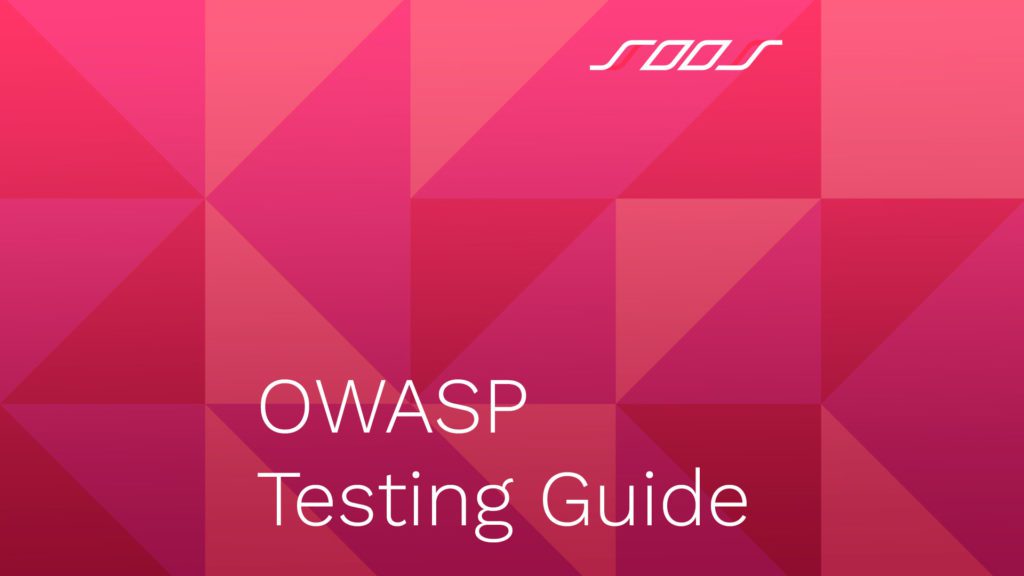Insecure software is one of the biggest challenges in today’s business world. The rise of social networking sites and web applications has made it all the more important for business owners to secure their software, applications, and data. The Open Web Application Security Project plays an essential role in helping businesses secure their networks. The OWASP testing guide teaches software engineers to test web applications to identify security issues by describing a general testing framework and techniques required to implement that framework. The guide we have here is designed to help you understand how to approach using that guide.
Use the Right OWASP App
OWASP publishes several products, documents, and user guides to test various platforms and applications. It is essential to select the correct OWASP app for your testing requirements. The Top 10 is one of the most well-known testing guides produced by OWASP. This document teaches developers how to secure their web applications and create more secure code.
However, OWASP also produces guidance for desktop apps, mobile applications, APIs, and other forms of software. It is vital to choose the best app for your software.
OWASP API Integration
A fundamental element of today’s app-driven world is the API. Application programming interfaces are a critical component of customer-facing and internal applications for banks, retail stores, and large corporations. APIs are inherently risky and often expose potentially sensitive information, including customer information. Developers need to produce secure APIs to deter hackers and other cybercriminals.
While API integration allows companies to automate business processes and share information between various systems, this connectivity can create security issues for business owners and customers.
The OWASP API Security Project provides strategies to help developers understand and mitigate the unique security risks associated with APIs. Recent topics include broken user authentication and security misconfiguration. OWASP also routinely releases a list of top vulnerabilities that threaten APIs. This list is known as the OWASP API Top 10.
OWASP Desktop App
Like other forms of mobile software, desktop applications are vulnerable to hackers and other security risks. To help mitigate these risks, OWASP produces testing guides to help secure desktop applications. The OWASP Desktop App Security Top 10 is developed for developers and security engineers. This document outlines the most critical vulnerabilities for desktop applications.
Business owners should utilize this document to ensure their desktop applications are secure. Following the steps outlined in this guide is the best way to ensure your developers and engineers are producing secure code.
OWASP Mobile
The OWASP Mobile Top 10 document is a critical resource for engineers developing more secure applications. Mobile apps are vulnerable to security risks, and attacks have increased in recent years. The Top 10 document lists the most common mobile device security risks and how to mitigate them.
OWASP also produces a mobile security test guide for developers. The guide includes the following content:
- Security testing during the app development phase
- Mobile platform intervals
- Reverse engineering and tampering
- Detailed case studies
OWASP mobile guides are essential for companies that specialize in mobile application development.
Security Flaws Testing with Automated Tools
Many companies sell automated tools to help engineers detect flaws during the software development process. While these tools can make life easier, they are not a complete solution. Once a problem is identified, it takes time and effort to investigate and verify the issue.
If you want to detect critical issues quickly, you may want to utilize testing techniques instead of automated tools. The strategies described in the OWASP testing guide outline mechanisms better suited to finding and eliminating flaws as quickly as possible.
Identity Management Testing
Most desktop and mobile applications have multiple types of users and functionalities, including the administrator, auditor, support engineer, and customer. Each user must be granted the proper permissions to properly perform their functions, posing security risks for companies.
While identity management testing was historically seen as unnecessary overhead, the OWASP testing guide makes it easy and relevant. Properly defining and managing the roles and access privileges of users can enhance the security of your systems.
Error Handling
Every type of application, including web, desktop, and mobile apps, generates errors for many reasons. While engineers sometimes ignore these warnings, this can cause more problems later on in the development process.
Error handling testing can help identify common issues, including stack traces, input mismatch, and network timeouts. The OWASP test guide can help you identify existing error output and analyze the types of work returned.
Cryptography
Cryptography uses techniques that enable only the sender and intended recipients to view message contents. However, improper encryption algorithms can lead to data leaks, authentication issues, and attacks. Hash algorithms have been characterized as weak and should be avoided if you have security issues. Further, the proper uses of parameters are also crucial for security.
The OWASP test guide can help you identify weak encryption or algorithms in your systems.
Client-Side Testing
Client-side testing is a term referring to any type of multivariate testing. This technique commonly uses A/B testing that occurs in the user’s web browser. Client-side testing is the opposite of server-side testing, where the analysis takes place on the webserver before being given to the end-user.
The OWASP test guide provides client-side testing instructions to verify that the proper input validation has been conducted.
Measuring the Security Software
The OWASP testing guide helps developers and engineers implement the techniques used to test for common security issues. Software security is a top concern of many firms, and testing your mobile and desktop apps consistently is the best way to ensure the safety of your systems.
Principles of Testing
The OWASP testing guide outlines five testing principles that can be used to measure software security before, during, and after development. These principles are:
- Define
- Design
- Develop
- Deploy
- Maintain
These principles help ensure your systems are secure during each part of the development process. The OWASP testing guide outlines the testing strategies that can be made during each of these phases.
Testing Techniques
The OWASP testing guide presents a framework that encompasses numerous testing techniques. These methods can be used to analyze the security of your software during various phases of the development life cycle.
Threat Modeling
Threat modeling is a popular testing technique to help developers identify threats their systems may face. Threat modeling is effective because it helps designers create mitigation strategies for potential risks before actual attacks happen. Thus, threat modeling is considered a risk assessment testing process.
OWASP recommends that all desktop and mobile applications develop and document a threat model. Designing models to predict the vectors of likely threats should be part of any software creation process.
Code Review
OWASP offers a code review guide for software and security professionals. The code review was created from the original OWASP testing guide. Most software applications can be developed more affordably if bugs are detected early in the development process. The guide offers best practices in code review so imperfections can be identified and caught early.
Penetration Testing
The OWASP testing guide outlines penetration testing methodologies. Penetration is a systematic testing tactic that helps identify vulnerabilities in an application’s code, design, or support systems. This testing process includes determining how an attacker can access and infiltrate an application.
Testing Objectives
One of the main objectives of utilizing the OWASP testing guide is to validate that security controls function as expected. By testing your system, you can prove the confidentiality and availability of the data. Another main objective is to validate that these security mechanisms are implemented with few or no vulnerabilities. Identifying vulnerabilities during the development lifecycle can help prevent future attacks.
Threats and Countermeasures Taxonomies
Developing threats and countermeasure taxonomies is another OWASP testing technique. This technique considers the root causes of vulnerabilities and uses these factors to verify security controls are designed and built to mitigate such weaknesses.
The OWASP Mobile Top10 helps derive general security requirements. In particular, using the classification of vulnerabilities can help in the threats and countermeasures of the taxonomies method.
Security Requirements Validation
From a functionality view, the validation of security requirements is one of the main objectives of security testing. From a risk management point of view, security requirements validation is one of the main objectives of information security assessments. On a more general level, security requirements validation is performed to find gaps in security controls, including encryption controls, information authorization, and lack of basic authentication.
Security Testing and Risk Analysis
Risk analysis is a popular security testing methodology. Risk-based testing prioritizes activities based on determining vulnerabilities. Using this method, engineers can identify risks and categorize them based on the level of potential impact.
Security Testing in the Coding Phase
Performing a security test in the coding phase is essential to validate that the created code complies with protected coding standards. Validating the code and associated artifacts during the development process ensures they are safe before being integrated into the application framework.
Coding requirement standards should be documented before the development process begins. Further, the codes should be validated using both static and dynamic testing strategies.
Security Test Data Analysis and Reporting
Every good security testing plan should include a robust data analysis process that leads to metric reporting. Defining the goals for these metrics is a prerequisite for any security testing process. For instance, the total number of risks found can inform future development processes. These metrics can also help define company security processes. For example, your company may require developers to reduce the number of risks to a certain level before the application is deployed to customers.
Reporting Requirements
Each company should establish reporting requirements for testing procedures. Many companies require testers to document vulnerability risk ratings, vulnerability origins, architectural flaws, and configuration issues.
OWASP Training
OWASP offers numerous training materials to help engineers and developers master software testing techniques. From using the OWASP testing guide to taking an OWASP certification course, there are many things you can do to better understand the security testing process.
Read the OWASP License & Copyright
The OWASP license and copyright agreement outline the creation of training guides and other resources. Read this document to learn more about the resources offered and the limitations of the principles.
Learn about the OWASP Tools
OWASP offers several tools to help developers find web and mobile applications vulnerabilities. One of the most popular tools available is the OWASP ZAP, a dynamic application security testing tool. This tool is entirely free and is among the world’s most popular application scanners.
Use OWASP Cheat Sheet
OWASP developed a cheat sheet series to provide developers and engineers with a series of best practices to follow. These cheat sheets are easy to follow and provide practical advice that most developers can implement. These cheat sheets are an excellent resource for any company to review during the development lifecycle.
Get an OWASP Scanner
OWASP offers an automated scanner that scans web applications for security vulnerabilities. These scanning tools review applications from the back end to the mainframe and can help identify risks such as cross-site scripting, path traversal, command injection, and SQL injection.
These scanners are free and can be used to maintain a high-security level after a mobile or desktop app has been developed. Please keep in mind that it is best to have a manual testing process and automated tools to supplement your main testing strategies. Automated tools serve a purpose but are not to be used as a primary testing mechanism.
SOOS DAST wraps and extends the OWASP ZAP automated scanner and improves it by including CI/CD pipeline integrations, Issue Manager Integrations, advanced authentication and a unified Dashboard.
OWASP Certification
OWASP offers training courses to help developers better understand its materials, including the popular OWASP Mobile Top 10 risk assessment. Obtaining an OWASP certification is a good investment for developers or designers who will perform security tests regularly. The OWASP certification is also an excellent designation to include on resumes for information technology professionals.
Obtain Security Solutions with SOOS
Many developers rely on the advantages that open source software has to offer during their project builds, knowing that there is an increased risk for vulnerabilities both now and in the future. We offer easy-to-integrate open-source software scanning solutions for your desktop and mobile applications. Don’t risk the security of your systems and applications any longer. Start scanning today!













